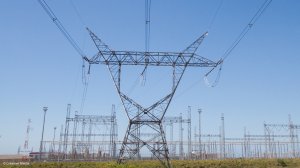The World Bank has approved a $138.5-million finance package to support the integration of renewable energy into Namibia’s electricity system by strengthening its transmission grid and integrating a second utility-scale battery storage system into the country’s network.
The initiative, which is Namibia’s first-ever World Bank-financed energy project, will be implemented by NamPower, with the aim of minimising outage risks, supporting load growth, and unlocking future opportunities for power trade in the Southern African Power Pool.
Project financing consists of grants, totalling $18.5-million from the World Bank and the Green Climate Fund (GCF); a loan of $100-million from the World Bank; and a loan of $20-million from the GCF.
The World Bank loan carries a variable spread loan with a final maturity of 15 years, including a grace period of five years. The GCF loan carries a 0.25% service fee with a final maturity of 40 years, including a grace period of 10 years.
The project will be implemented over five years and is structured around three components: the development of the second Auas-Kokerboom transmission line; the development of a utility scale battery energy storage system facility; and technical assistance to support NamPower to develop bankable renewable energy projects and enhance the socioeconomic benefits of its projects.
The 465-km Auas-Kokerboom line will run from Auas transmission station outside of Windhoek to the Kokerboom station near Keetmanshoop, making it the second 400-kV line between the two areas and increasing NamPower’s north-south transmission capacity. The line will make use of the 422 series of towers, utilising a compaction cross-delta conductor’s arrangement.
The 45MW/90MWh battery storage system will be connected at the Lithops substation in the Erongo region, chosen for its proximity to a key load centre, mainly consisting of large mines, and because the area is expected to attract sizeable solar photovoltaic investments.
Grant funding from the IBRD Fund for Innovative Global Public Goods Solutions and the GCF will be used for developing the utility-scale battery storage facility. The World Bank loan, together with NamPower’s own resources, will fund the Auas-Kokerboom transmission line.
Besides facilitating the integration of large-scale renewable energy in Namibia’s generation mix, the battery storage system will also help reduce imports, improve grid stability and help manage its demand peaks.
“This project will support NamPower to develop future renewable energy projects,” World Bank country director for Namibia Satu Kahkonen said in a statement, which highlighted Namibia’s excellent renewable-energy resources and the fact that renewables currently account for only 30% of total generation.
NamPower MD Kahenge Haulofu welcomed the financing approval and described the new transmission line as crucial to unlocking increased access to variable renewable energy within Namibia, as well as facilitating regional electricity trading.
“In addition, our second utility-scale battery energy storage system will be developed and integrated in our transmission network to support the development and uptake of renewable-energy plants,” Haulofu said.
EMAIL THIS ARTICLE SAVE THIS ARTICLE ARTICLE ENQUIRY
To subscribe email subscriptions@creamermedia.co.za or click here
To advertise email advertising@creamermedia.co.za or click here











